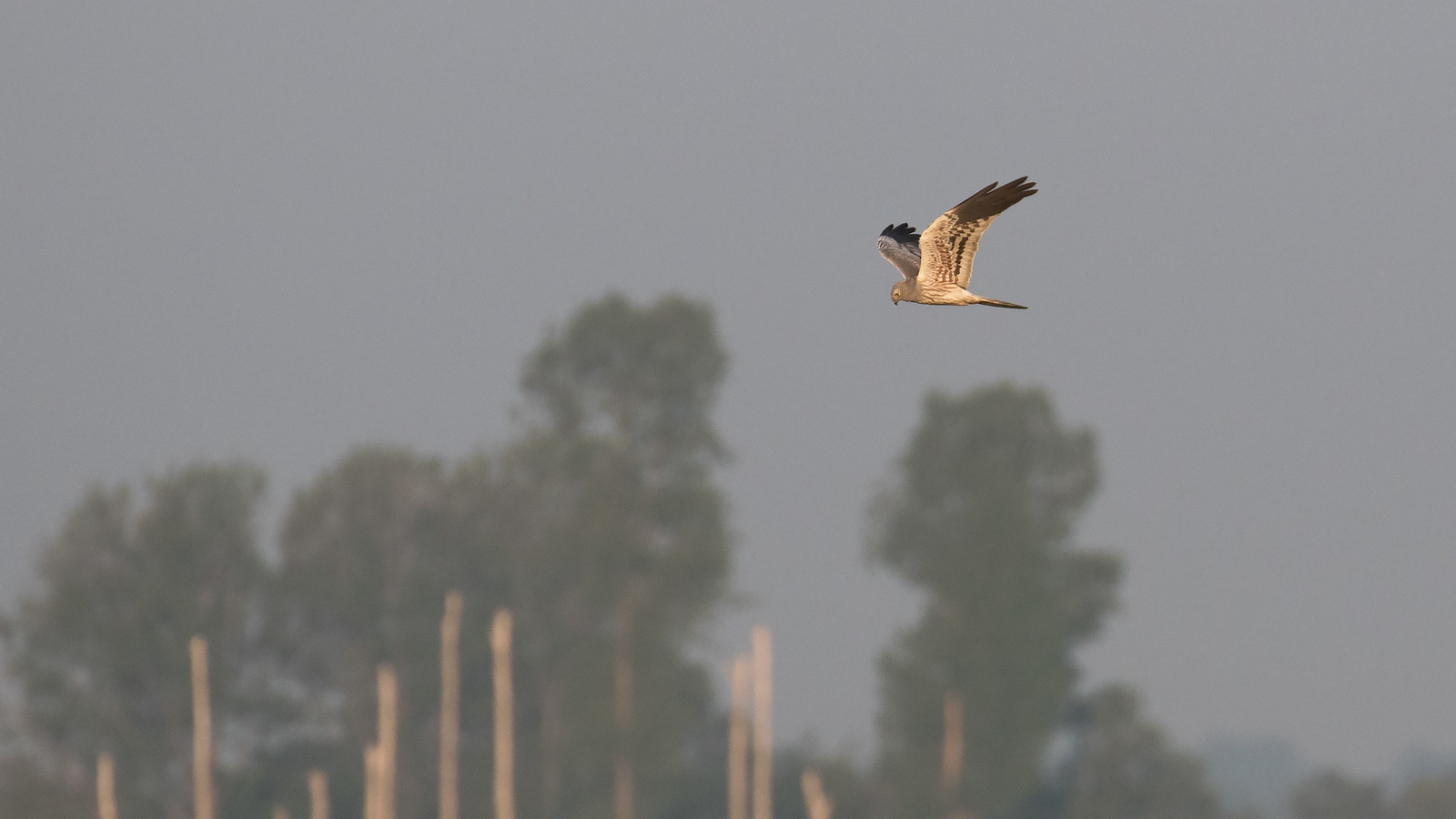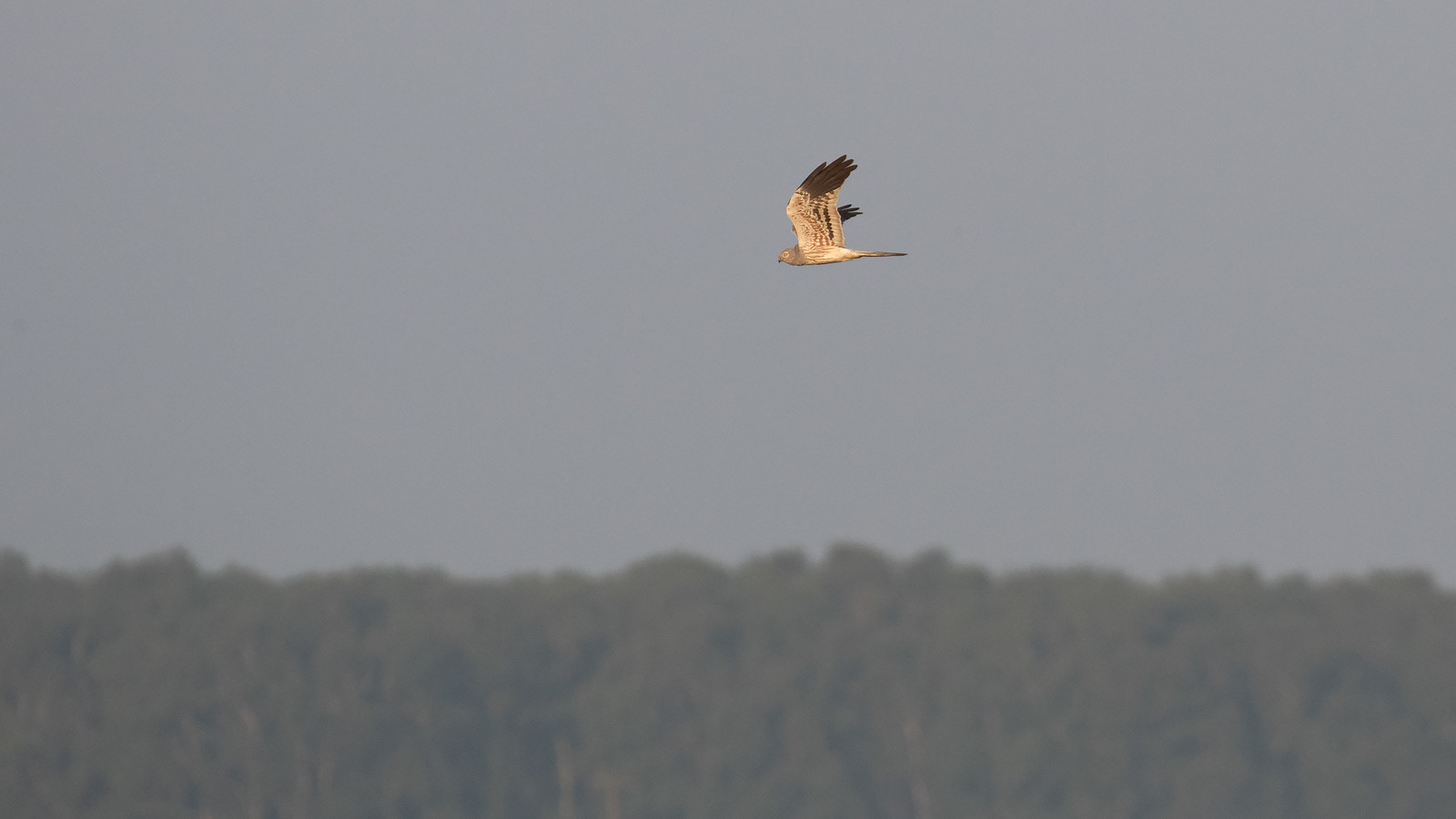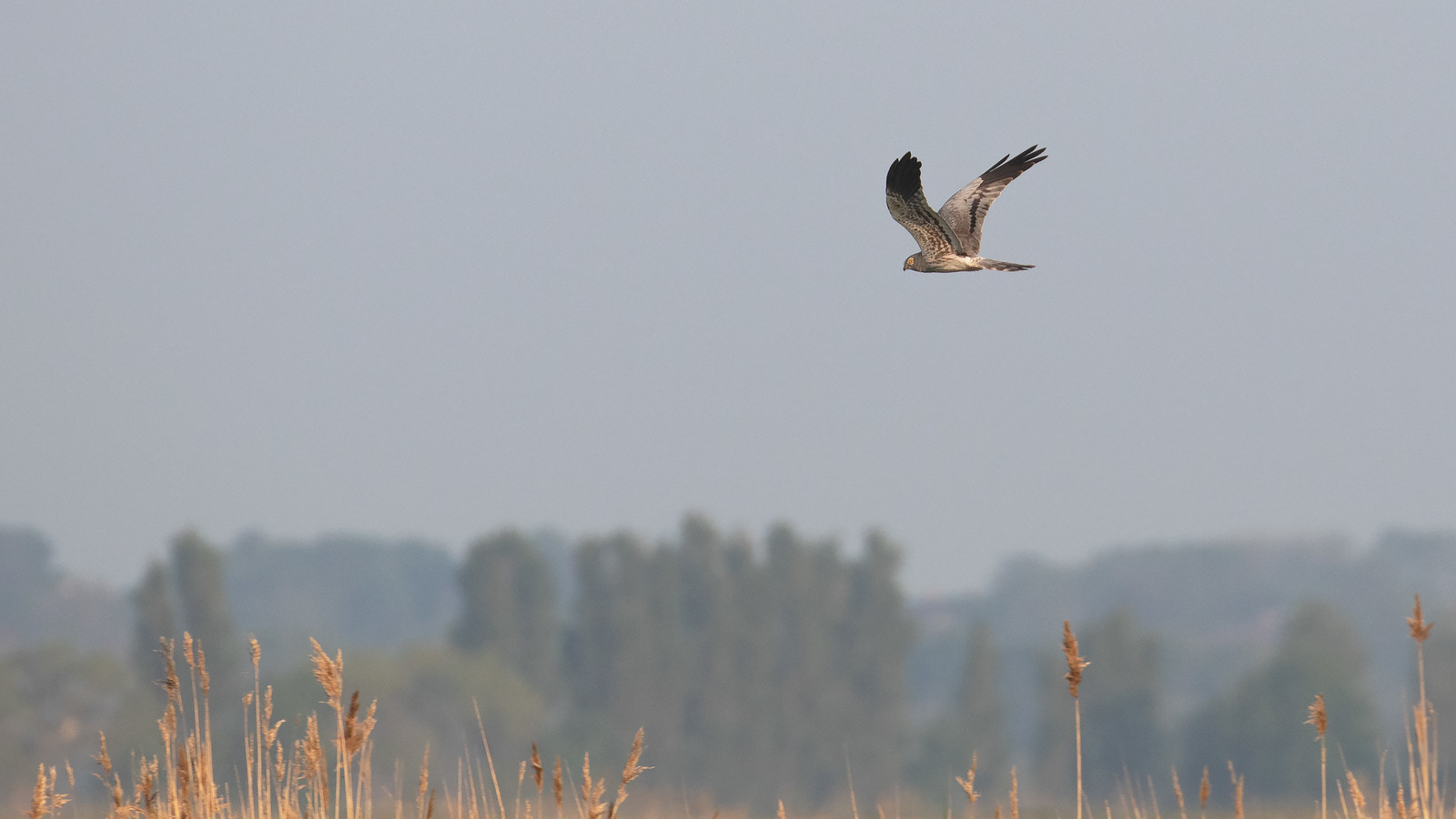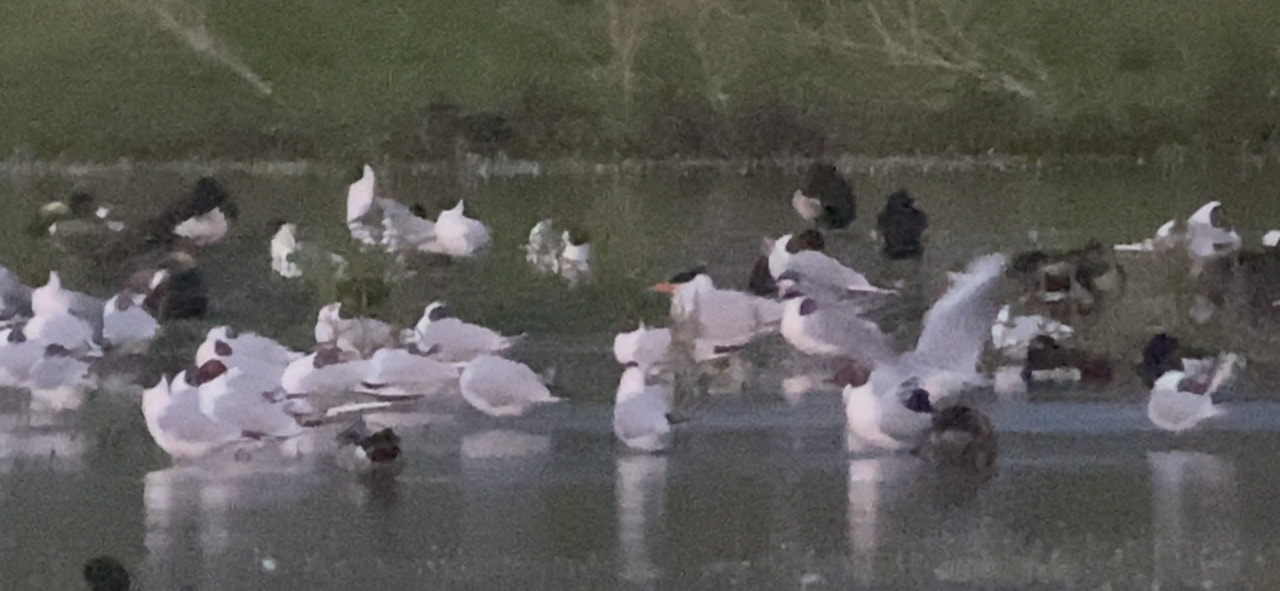|
After a wet and often frustrating May, June started warm and dry, before wet and cool conditions resumed mid-month. It was, however, a pretty productive month – at least in terms of quality birds. One key aspect at my patch at least was that the aggressive pair of Lapwings nesting on the eastern shore of Wader Pit fledged their chicks and finally calmed down, deciding that chasing every other bird that landed there wasn't worth continuing after spending the entirety of the previous month seeing off any interesting waders. But more on that later.
The opening day of the month produced a fantastic male Montagu's Harrier at the Great Fen, south of Peterborough. With the bird in potential breeding habitat, wardens wanted the news kept off-air in case of a female turned up. But, as it quite unsurprisingly transpired, the promise was short-lived and the bird cleared off after just a day.
The highlight of the month (and likely my birding year, at least locally) was a Caspian Tern at BLGP on 20-21 June. I saw the bird here in 2017, having twitched back from London to connect with it, never thinking I'd ever get it back as a patch tick. Less than four years on and it repeats – and on the very same pit!
The find was most fortuitous in its nature and a classic example of what must be being missed on patches nationwide, even by the most dedicated of watchers, and especially at perceived 'quiet' times of year. The random appearance of various rarities at inland sites during June had encouraged me to keep checking the patch on a daily basis, and a lovely male Ruff on 19th had spurred me on. Two daytime visits on 20th had produced little and were it not for my girlfriend needing to head back to her house late that evening, I would never have stirred from the sofa. After dropping her at home, it was already 9.55 pm, yet there was just about enough daylight left to give Wader Pit a quick glance. I got there and within a minute or so picked up the tern sat nonchalantly among the hundreds of Black-headed Gulls roosting on the east shore. By this point it was just after 10 pm and the light fading rapidly, yet Jake Williams and Bob Titman still managed to make it to see the bird before the light was lost. The bird got up and flew around a couple of times, calling, which was absolutely brilliant to hear/see as it passed at close range. The light was far too gone for any sort of proper photos, so it was just a case of appreciating the bird in the little light left before darkness fell.
Next morning, Paul Bolton was already on site around 3.30 am and the tern was still there. Mad, really. Almost 24-hour birding. I arrived a short while before 4 am and the bird was still sat there, on Wader Pit, looking pretty chilled out, despite most of the Black-headed Gulls having already departed. But then it got up around 4.20 am, just as the light was beginning to improve, flew around, called a couple of times and headed off south-west, never to be seen again. In all the views we'd had, we couldn't be sure if the bird had a ring or not, thus weren't able to confirm if it was one of two birds commuting between East Yorkshire and north Lincolnshire sites, nor a yellow-ringed bird which turned up at Llanelli WWT a few days later. Interestingly, the last BLGP bird, in 2017, was also seen at Llanelli! Funny how these things work.
0 Comments
Leave a Reply. |
This pageThe musings of a wildlife enthusiast, usually armed with his camera. Archives
September 2023
|




 RSS Feed
RSS Feed